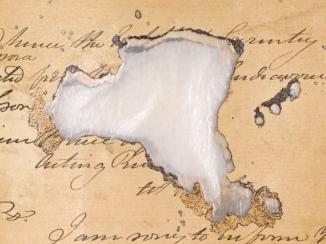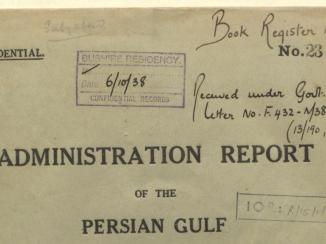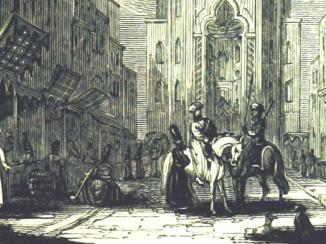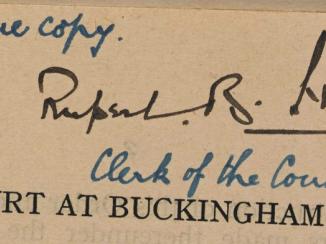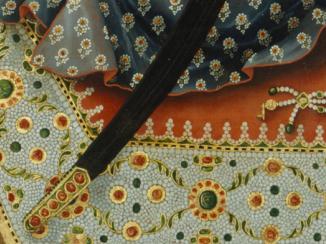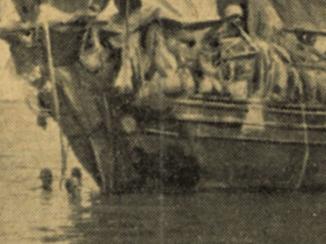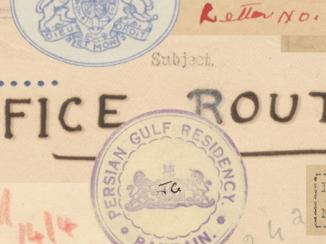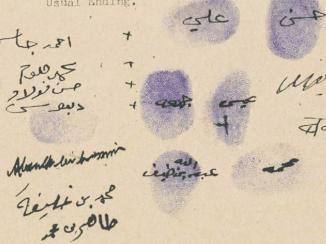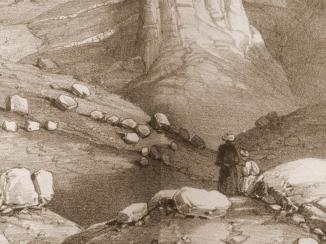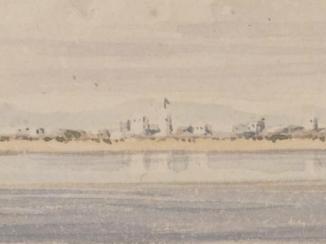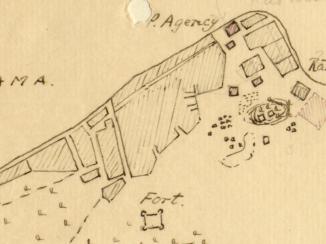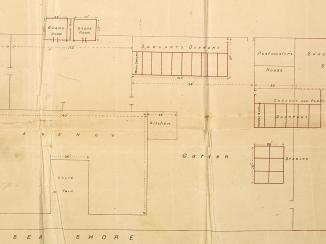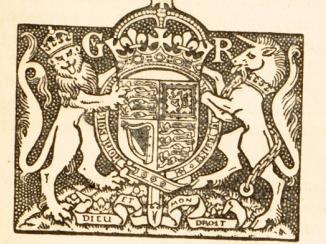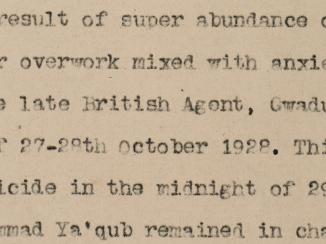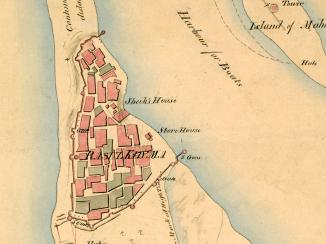Overview
Growing tensions between the British Political Resident A senior ranking political representative (equivalent to a Consul General) from the diplomatic corps of the Government of India or one of its subordinate provincial governments, in charge of a Political Residency. in the Persian Gulf The historical term used to describe the body of water between the Arabian Peninsula and Iran. , Lieutenant-Colonel Percy Z. Cox, and the Sheikh of Dubai over British naval patrols in the Gulf and the suppression of local arms trading, finally came to a head on the morning of 24 December 1910. What followed was intended to be a successful policing raid, but the operation went badly wrong, and resulted in numerous deaths.
Naval Patrols
In 1910, the British were concerned that illegal arms were finding their way from Muscat through the Persian Gulf The historical term used to describe the body of water between the Arabian Peninsula and Iran. to the northwest frontier of India. There they were being used by Afghan tribesmen in raids on British territory. As a result, the British mounted naval patrols in the Gulf to intercept the trade.
One of the vessels involved in these patrols, HMS Hyacinth, was patrolling the Trucial Coast A name used by Britain from the nineteenth century to 1971 to refer to the present-day United Arab Emirates. when it received reports of an arms cache in Dubai. The captain of the Hyacinth, J. D. Dick, decided to take immediate action.
Buried Rifles
Dick took the precaution of informing the Ruler of Dubai, Sheikh Butti bin Suhayl Al Maktum that he intended to mount a search for arms in two houses in the town. Just before dawn on 24 December, Dick led a landing party of four officers and sixty-four men on shore.
Though he had expected to meet the Sheikh on arrival, when the Sheikh failed to appear, Dick decided to press on. His party made their way through the network of narrow streets to one particular house. After conducting a search, they remained suspicious and proceeded to dig up the floor of a certain room, where they found three rifles. The rifles were of an obsolete pattern (type), and would have been difficult to fire.
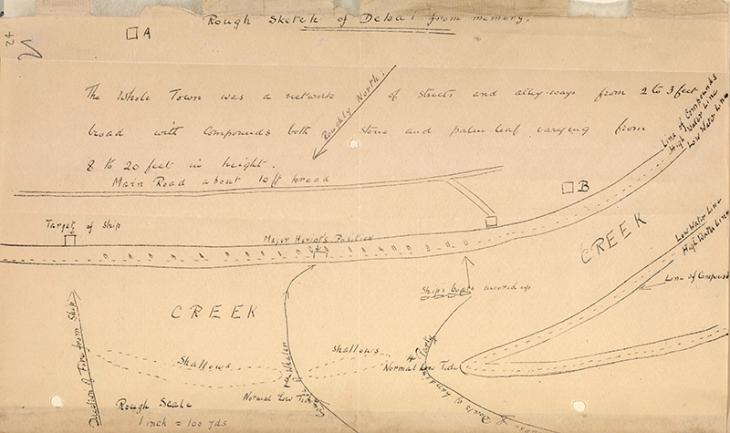
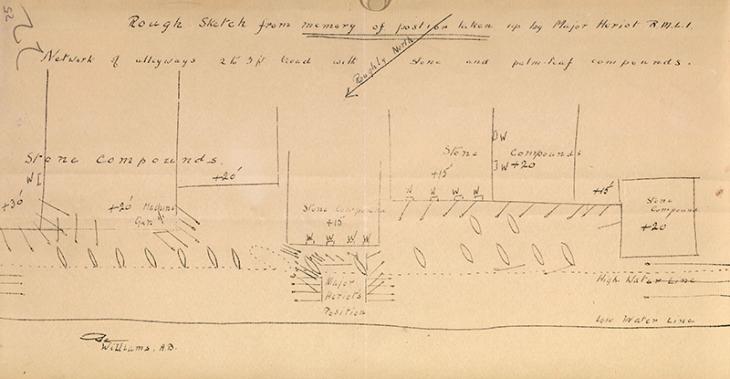
Fire Fight
Half the force then began to make its way to the second house, but before long shots were heard and armed Arab men were seen running in the streets. In the fire fight that followed, a Royal Marine Sergeant and four Able Seamen were killed. Nine others were wounded.
Twelve Arabs were killed in the engagement and an unknown number wounded. As the British party prepared to withdraw, the guns of the Hyacinth opened up to provide cover, firing six-inch lyddite shells (the precursor of ‘high explosive’ shells) into the houses near the beach. This resulted in the deaths of a further twenty-five Arabs.
Ultimatum to the Sheikh
According to the British, when the Sheikh did appear, he seemed easily able to control the firing on his side. A few days later, Cox and Rear-Admiral Sir E. J. W. Slade, Commander in Chief, East Indies Station, who had quickly made their way to Dubai, invited the Sheikh on board and issued him with an ultimatum.
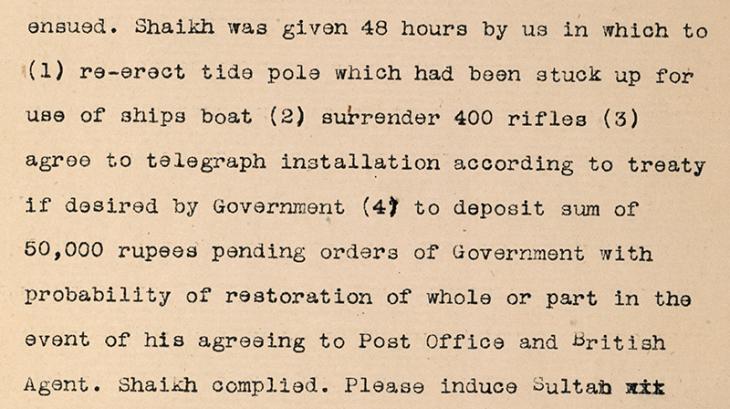
They demanded the delivery of four hundred serviceable rifles to be collected from the local inhabitants, the establishment of a telegraph station, and payment of a fine of 50,000 rupees Indian silver coin also widely used in the Persian Gulf. . The return of the fine or any part of it was to depend on the Sheikh’s agreement to the installation in Dubai of a British Agent, with a personal guard, accommodation, and a guarantee of friendly treatment. The Sheikh agreed to pay the fine and hand over as many guns as he could find, but was reluctant to accept an Agent.
Arab Protests and Press Response
The Sheikh complained that the moment the British arrived they ‘began slaughtering and killing my men’. Correspondence between the Sheikh and the British Resident that followed the incident includes an eyewitness statement of many prominent residents of Dubai, complete with an unusually large number of personal seals.
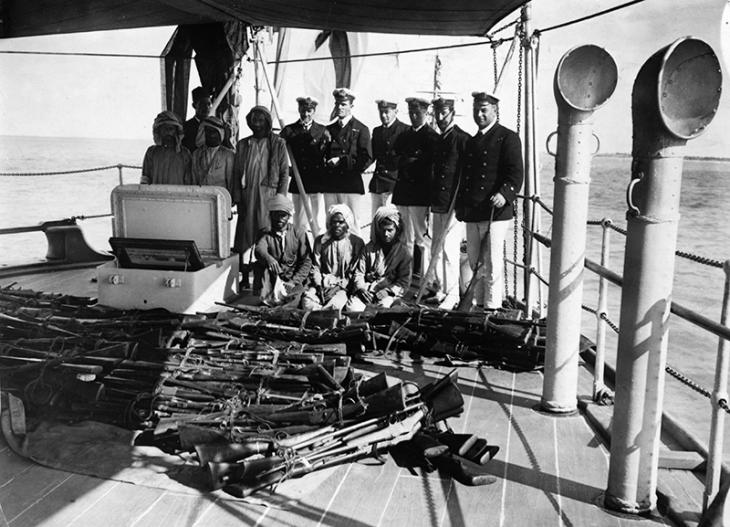
Nonetheless, the records show that both the guns and the 50,000 rupees Indian silver coin also widely used in the Persian Gulf. were handed over. In a memorandum of August 1911 to British naval commanders in the Gulf, Rear-Admiral Slade warned that extreme caution should in future be used in all operations concerning the suppression of arms traffic.
The British press were adamant that the Sheikh had been taught a lesson: a correspondent in The Times of 4 April 1911 reported that ‘the punishment that was meted out’ to the Sheikh of Dubai ‘will probably deter the remaining Trucial Coast A name used by Britain from the nineteenth century to 1971 to refer to the present-day United Arab Emirates. chiefs from emulating his example’.
Consequences
Although the incident passed off without further violence, in The United Arab Emirates: A Modern History Muhammad Morsy Abdullah writes that ‘The most important long-term effect of the incident was to provoke hatred against the Indian traders and British firms’. Elsewhere, Susan Muaddi Darraj and Meredyth Puller write that ‘the sheikhs of the Trucial States A name used by Britain from the nineteenth century to 1971 to refer to the present-day United Arab Emirates. no longer viewed Great Britain as an ally, but as an oppressor’.
Moreover, in the immediate aftermath, as the senior British officials in the area tried to redeem the situation by making a series of punitive demands on the Ruler of Dubai, tensions only increased. These demands and the operation itself came in for severe criticism from the British Government in India, and did long-term damage to relations with the peoples of the Trucial Coast A name used by Britain from the nineteenth century to 1971 to refer to the present-day United Arab Emirates. .

